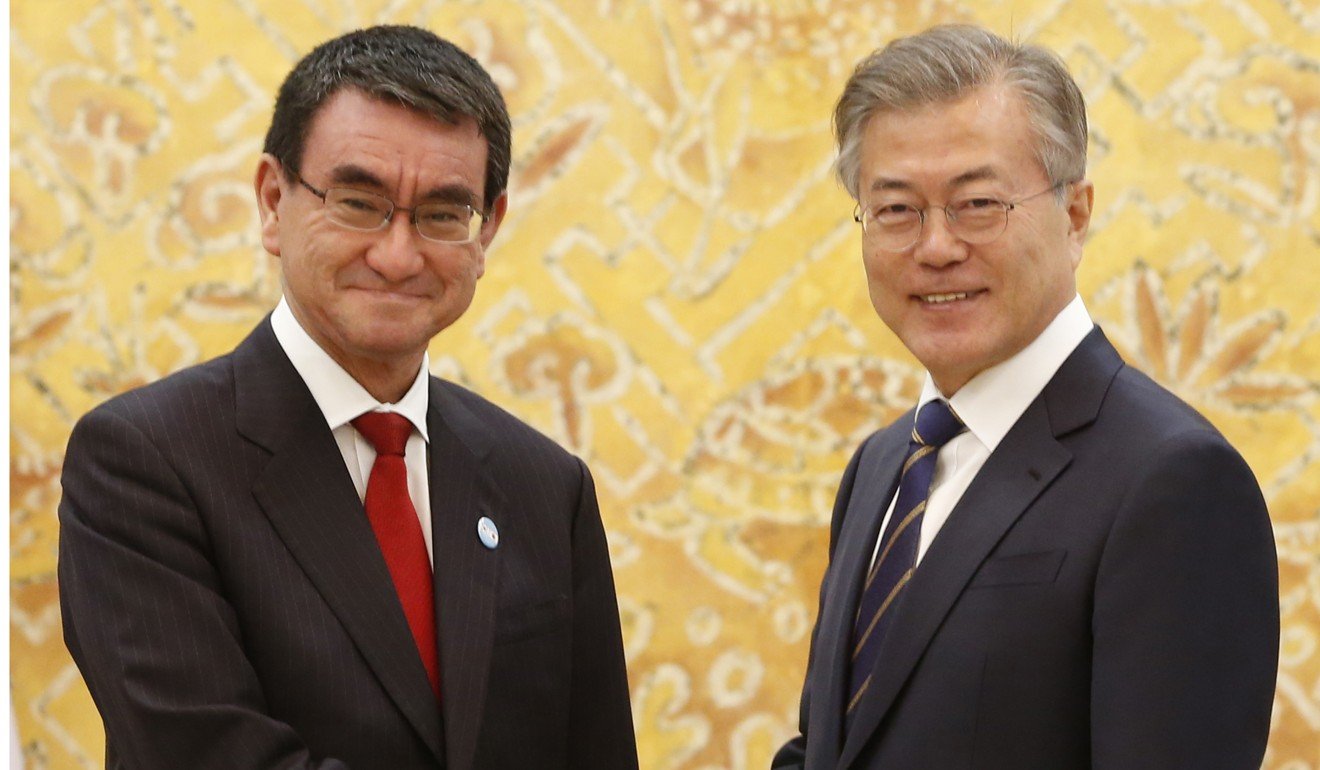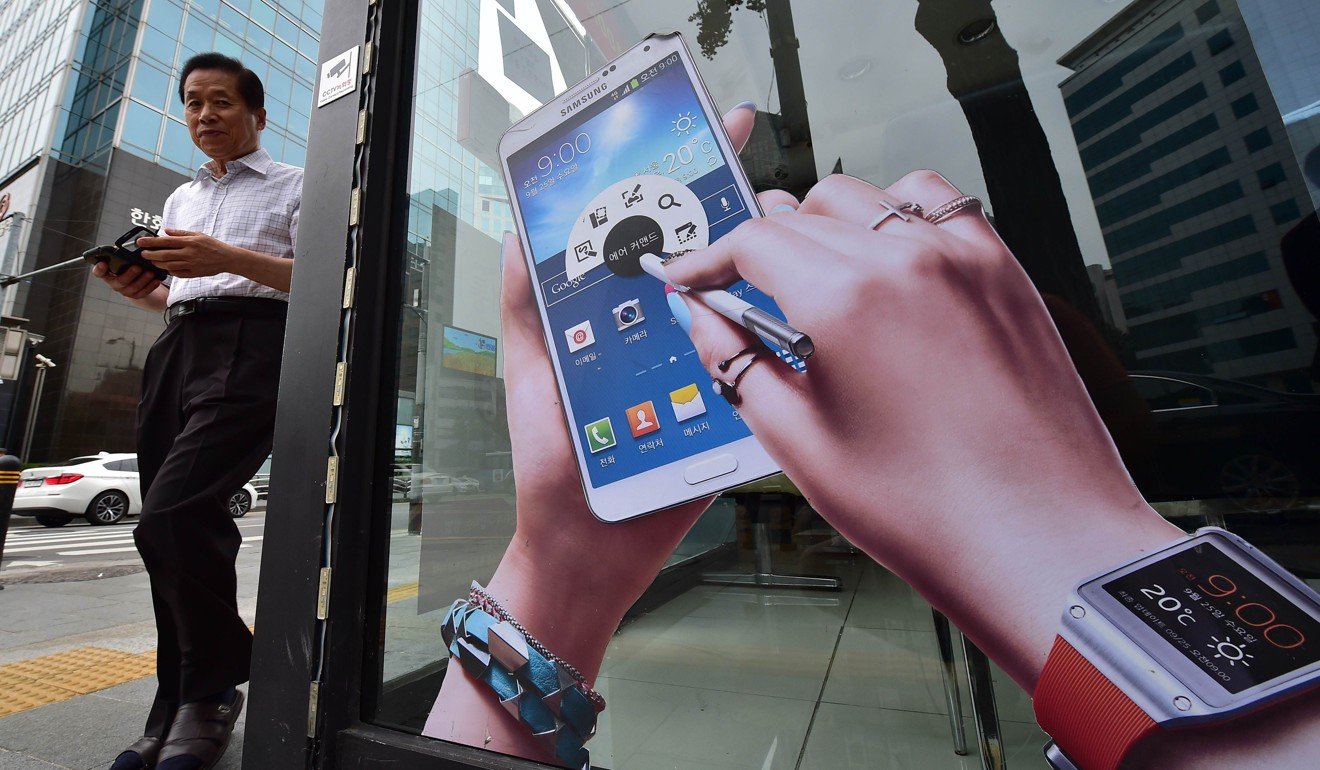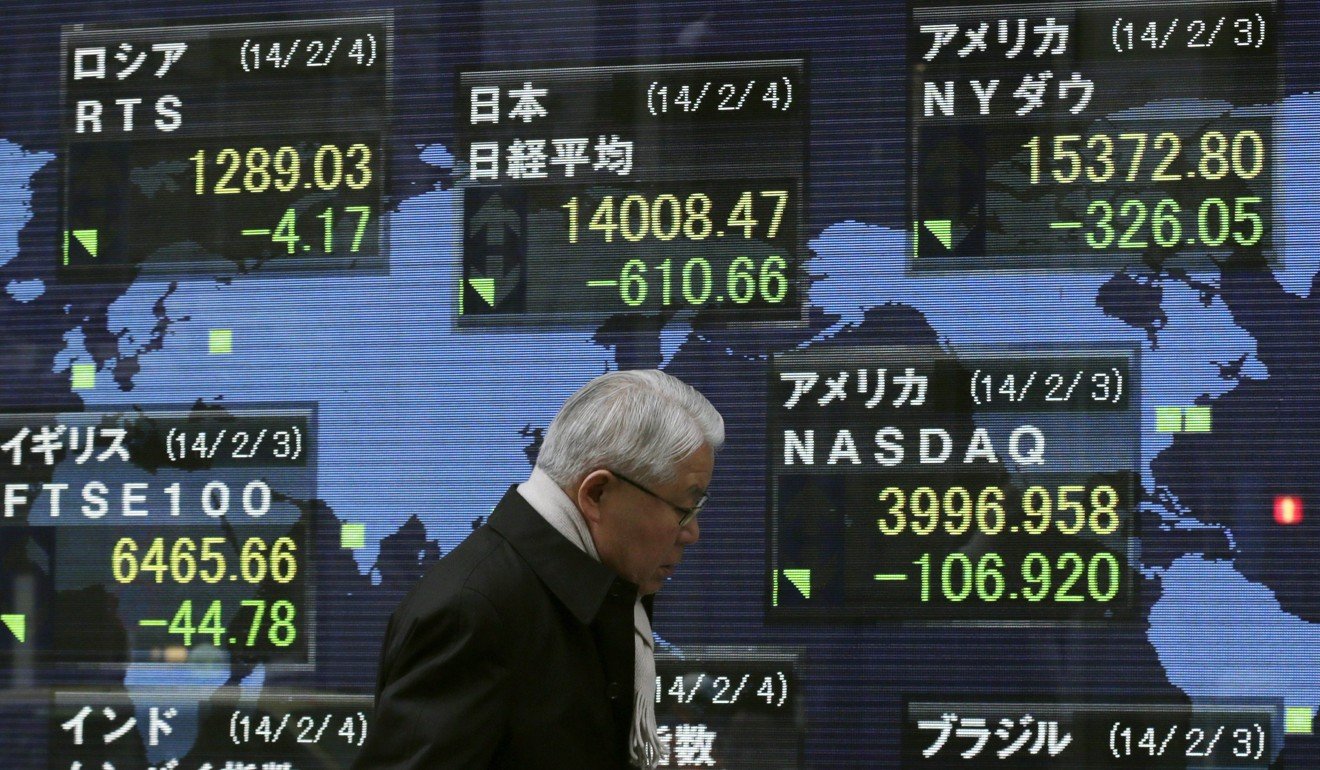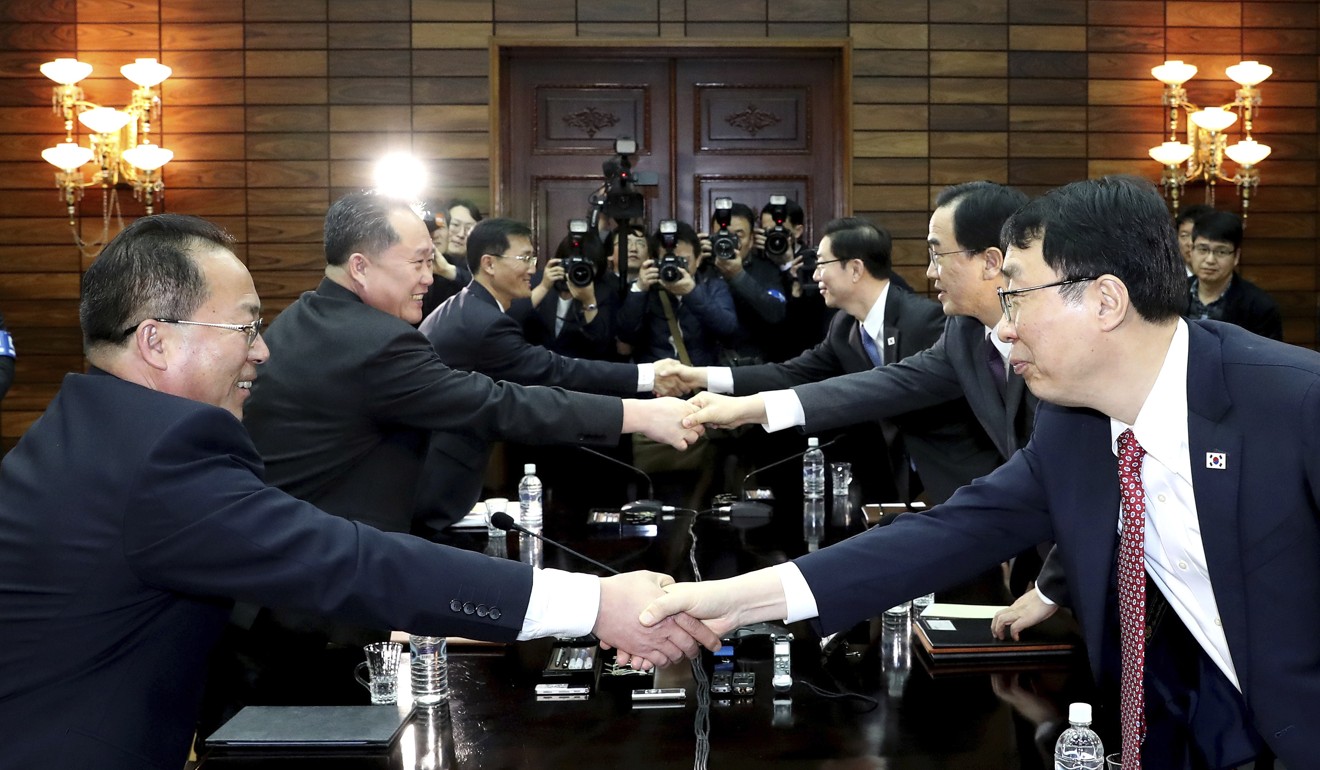
Why can’t Japan and South Korea get past their battle scars?
As economic ties between Seoul and Tokyo fade, bad blood dating back more than a century has started to resurface
In 2003, Winter Sonata, a long and heartbreaking Korean TV drama series about love, passion, sacrifice and respect for human dignity, was broadcast on Japanese television, to great acclaim. A charismatic Korean actor, Bae Yong-joon, portraying a gifted young architect and a romantic lover, became a megastar in Japan, and the darling of Japanese ladies. Everyone came to know him simply as “Yong-sama”. Yong-sama-style scarfs, glasses and hairstyles became instant hits. Winter Sonata tour packages grew popular with Japanese tourists to South Korea, and their numbers rocketed.
In Japan Winter Sonata marked the beginning of the “Kanryu” (Korean-style cultural products) boom. This, in turn, provided a strong impetus for the expansion of bilateral ties – including business and trade.
Now those days are gone. The honeymoon is over, and all the complexities in the neighbours’ relations are surfacing once again – as was demonstrated when Japanese Foreign Minister Taro Kono visited South Korea this week to push for continued international sanctions on Pyongyang until it gives up its nuclear and missile programmes. When Kono met his South Korean counterpart Kang Kyung-wha in Seoul, the two nations vowed to work closely on the North Korean threat, but remained divided on the issue of wartime crimes.

Japan and South Korea, the first- and second-largest industrially developed nations of Asia, play a central role in the continent’s economy, including the creation of large-scale free trade areas which could transform it drastically.
History matters. Korea was under Japan’s colonial rule from 1910 to 1945. In June, 1965, after long years of difficult negotiations, the two countries signed the Treaty on Basic Relations and the related agreements. Formally, it completed the normalisation process. However, half a century later, disputes remain.
Controversial normalisation
Bilateral talks on the treaty were effectively arranged by the United States on the premise that South Korea would not claim war reparations.
At the time, Washington was already betting on Tokyo to be its new key ally in the region, crucially important to contain the communist threat.
Along with the treaty, the two countries signed agreements on the settlement of claims and on economic cooperation, through which Japan provided large-scale economic help.
Consequently, Japan believes that given the massive economic aid it provided, all of South Korea’s war claims should be settled once and for all.

However, in South Korea, the 1965 treaty has been bitterly criticised as humiliating and not properly prepared. There are calls to amend it and even to create a new agreement – options unacceptable to Japan.
Abe’s nuclear disaster: why has Japan been shut out of North Korea talks?
From the South Korean perspective, the treaty has left two major problems unsolved.
Yoo Euy-sang, a former director of the Northeast Asia Division 1 at the South Korean Ministry of Foreign Affairs and the author of the book Diplomatic Propriety & Our Interests With Japan, said the treaty had left two major problems unresolved. “[The treaty] didn’t succeed in achieving its initial goal, to settle all the problems related to the colonial past, and down to today we still argue about those problems,” he said.
“Second, the Korean government took away its citizens’ individual rights to ask for reparations from the Japanese government as victims of colonialism. The Korean government made a lump sum agreement concerning this matter.”
In Seoul’s view, the agreements do not cover important and sensitive bilateral issues, such as the Korean women forced into sexual slavery by Japan’s Imperial Army – euphemistically referred to as “comfort women. Such issues have to be dealt with beyond the 1965 accord’s framework.
The apology puzzle
Still, Japan made an important step forward in 1995. In a statement on the 70th anniversary of the end of the second world war, then prime minister Tomiichi Murayama offered an apology to the countries that were under Japan’s colonial rule, offering his “feelings of deep remorse” about the suffering of those under colonial rule.
However, many on the South Korean side took umbrage that the apology didn’t mention their country by name, nor did it detail particular atrocities such as the abuse of “comfort women”.
But perhaps most importantly, many in South Korea simply do not consider Japan’s remorse as sincere. Japanese leaders’ continue their pilgrimage to the Yasukuni Shrine in Tokyo (honouring the war dead including those convicted for war crimes by the post-war court) and Japanese textbooks, in the view of South Koreans, fail to properly assess what its military did before and during the war.
The ‘comfort women’ issue
In the 1990s, Seoul rejected Tokyo’s offer to compensate “comfort women” through the Asian Women’s Fund it had established, because it did not include an admission of full responsibility.
But in 2015, a new agreement was reached. Japan apologised to the victims and contributed 1 billion yen (HK$73 million) to a fund to help them.

However, since the “comfort women” were brought in by civilians and the wartime brothels were commercially operated, Japan’s government does not accept direct responsibility.
How karaoke and Korea’s love of plastic surgery became front lines in America’s war on sex slavery
In early 2017, Japan temporarily recalled its ambassador to South Korea after a “comfort woman” statue was erected right in front of its consulate in Busan (the first one was placed in front of the Japanese embassy in Seoul in 2011, and since then activists installed dozens more in South Korea and abroad). Bilateral relations deteriorated.
No way out of the deadlock is in sight.
Economic challenge: trade imbalance
Since the 1965 normalisation, bilateral economic ties between Japan and South Korea have been expanding dramatically.
South Korea has made phenomenal progress in industrialisation, achieving it within a shorter period of time than Japan. By the mid 1980s, it became a major exporter of a variety of manufacturing goods. At the beginning of this century, Samsung, LG and other Korean electronics giants rose to leading positions in global markets, outperforming their Japanese competitors. South Korean firms have also grown into undisputed leaders in the shipbuilding sector and became noticeable global players in an array of industries from chemicals to robotics.
Why Korea’s ‘comfort women’ must be remembered
Unlike Japan, however, South Korea’s industrialisation has been much more focused on a small group of leading family owned conglomerates called chaebols, generously supported by the state. South Korea also lags far behind Japan in creating advanced supporting industries, especially technologically advanced small and medium enterprises that supply parts and materials for final product makers – the vacuum is being filled by Japanese suppliers. South Korea’s export-oriented industrial growth would be unthinkable without massive imports of Japanese parts, materials and machinery.

As a by-product of such divisions of labour, South Korea’s deficit in bilateral trade ballooned decades ago, passing US$1 billion in 1974. By 1994, it had reached US$10 billion. To address the problem, Seoul not only urged Tokyo to reduce its import tariffs and remove non-tariff barriers, but in 1978 introduced a diversification scheme, restricting imports of designated items from countries with which it had big deficits – effectively targeting Japan only. It blocked imports of Japanese-made automobiles as well as colour televisions and other electronic products. The scheme was abolished only in 1999, failing to reduce the trade imbalance.
Did Beijing just give South Korea’s Moon the cold shoulder?
With the signing of the Japan-South Korea Joint Declaration on a New Partnership in 1998, the two sides tried a new approach. Japan pledged to support technological development in South Korean parts and machinery industries. It also agreed to encourage Japanese companies to produce in South Korea and partner with local firms.
Nevertheless, South Korea’s deficit continued to increase, hitting US$36 billion in 2010. In 2016 it dipped to US$23 billion, decreasing only because of the decline in bilateral trade itself.
Squeezing ties, declining interdependence
Depreciation of the yen against the won negatively influenced South Korean exports, while the slowdown in the South Korean economy impeded exports from Japan.
But the squeeze of the bilateral economic ties also has an important structural dimension. South Korea is diversifying its external economic ties in general, rapidly expanding links with China and dramatically reducing exposure to Japan.
Japanese goods accounted for 25.9 per cent of its total imports in 1991, but just 10.2 per cent in 2014. Meanwhile, China’s share soared from 4.2 per cent to 17.1 per cent.
Within the same period, Japan’s share of South Korean exports plunged from 17.7 per cent to 5.6 per cent, while China’s portion rose from 1.4 per cent to 25.4 per cent.

Japan has fallen to number five in South Korea’s export market, overtaken not only by China and the United States, but also by Hong Kong and Vietnam.
China overtook Japan as a trading partner of South Korea in 2007. In 2012, it replaced Japan as the country’s biggest source of imported auto parts, though not least because many Japanese manufacturers have transferred their production sites to China and are now exporting to South Korea from over there.
It is this declining economic dependence on Japan that made it easier for Seoul to adopt tougher stances on the diplomatic front. The 1965 treaty was signed in the midst of the cold war, and the geopolitics of the period were a major driving force that brought Tokyo and Seoul closer together under the leadership of the US. Both countries were major Asian outposts containing the communist threat in Asia.
New geopolitical landscape
With the end of the cold war and China’s shift towards an open market economy, the situation changed drastically. With the formation of a new, multipolar world structure with many leading players, South Korea has drifted towards China and has expanded its relations with the Association of Southeast Asian Nations and India. The role of Japan as its diplomatic partner on a global political arena has declined.

Of course, the North Korean factor – actually, a remnant of the cold war – leaves Tokyo and Seoul with no other option but close cooperation in the diplomatic arena, but even in this area differences are growing more and more evident.
The Abe administration, like Washington, advocates a tough stance towards Pyongyang, emphasising the importance of pressure and sanctions.
On the contrary, South Korea’s Moon administration is keen to promote North-South dialogue, an attempt to create an atmosphere of reconciliation and cooperation, without any promises from Pyongyang about its nuclear and missile programmes.
Still, better times may come
So, can Tokyo and Seoul put their relations on track? Not in the foreseeable future.
The legacy of the second world war and Japan’s colonial rule will remain a burden for years to come.
The intensity of economic ties is faltering. Post-cold war geopolitics are weakening the once strong Tokyo-Seoul bonds.
However, as Japan and South Korea drift apart, there is a very important factor that can reverse their course: generational change.
Exchanges between the Japanese and South Korean youth are expanding.
More students from the two countries are studying together and socialising.
It won’t be long before new generations emerge in both countries, generations of people who do not suffer the scars of war and will inevitably feel less emotional about history, helping them move forward and out of the inertia of the past. ■

